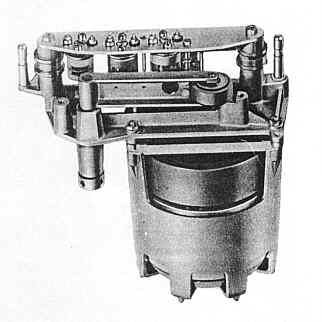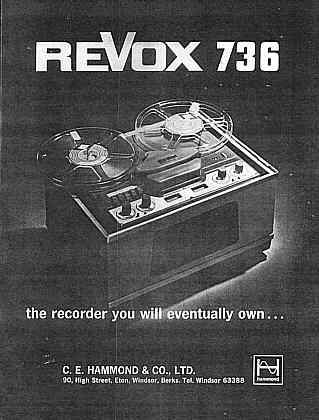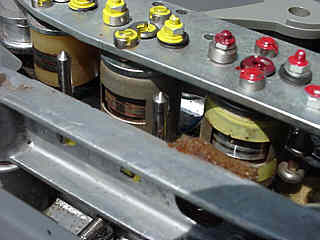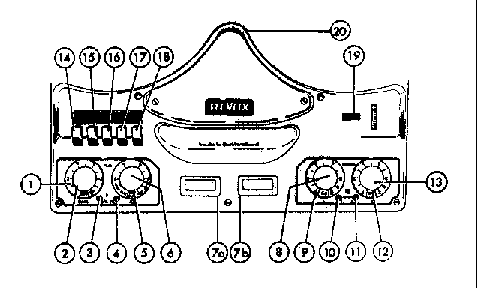HEART OF THE REVOX
Your assurance against wow and flutter, now or later, is the huge Papst Hysteresis - Synchronous capstan motor with external rotor directly coupled to a dynamically balanced flywheel by means of a special anti-vibration rubber disc (as shown in figure 1). This effectively damps out all but the barest traces of flutter and permits piano recordings to be made at 3 3/4 i. p. s. in absolute safety. The motor is now carried in a new casting to reduce any ringing noise. Two smaller Papst outer rotor motors are employed for fast winding and tensioning and a slight back tension is retained during winding. So smooth is this operation that you can actually switch from right to left (or vice versa) on fast tape handling - no tape snatch no tape spill no breakage. The braking is mechanical with electrical control. Consequently braking in efficient precise and immediate; so the REVOX always fails 'safe' with any tape. The use of solenoid control throughout provides for effective remote control, and the machine may be started or stopped in the record or replay functions at any distance.

CAPSTAN-FLYWHEEL-HEAD BLOCK ASSEMBLY


